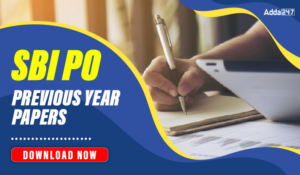Dear Aspirants,
Reasoning Ability is an onerous section. With the increasing complexity of questions, it becomes hard for one to give it the cold shoulder. The only way to make the grade in this particular section in the forthcoming banking exams is to practice continuously with all your heart and soul. And, to let you practice with the best of the latest pattern questions, here is the Adda247 Reasoning Quiz based on the exact same pattern of questions that are being asked in the exams.
Directions (1-5): Study the information and answer the given questions:
Eight persons J, K, L, M, N, O, P and Q will have to attend the seminar in the March and April month. In each month, they will attend the seminar on dates 3rd, 7th, 9th and 11th of the given month. Not more than four persons will attend the seminar in same month.
J will attend the seminar on 7th of any of the given month. Three persons will attend the seminar between J and P. More than two persons will attend the seminar between P and M. Two persons will attend the seminar between M and Q. Three persons will attend the seminar between Q and L. K will not attend the seminar immediately before or immediately after the dates on which Q attend the seminar. K will not attend the seminar on 11th April. Two persons will attend the seminar between N and O. N will attend the seminar in March month.
Q1. Who among following will attend the seminar on 11th April?
(a) L
(b) P
(c) O
(d) J
(e) M
Q2. How many persons will attend the seminar between P and Q?
(a) One
(b) three
(c) five
(d) two
(e) four
Q3. L will attend the seminar on which of the following day?
(a) 7th March
(b) 3rd March
(c) 11th March
(d) 11th April
(e) None of these
Q4. If L is related to K and Q is related to O then in the same way N is related to?
(a) L
(b) P
(c) O
(d) J
(e) M
Q5. Who among following will attend the seminar on 3rd April?
(a) Q
(b) P
(c) O
(d) J
(e) M
Directions (6-9): In each of the questions below is given two statements followed by two conclusions numbered I and II. You have to take the given statements to be true even if they seem to be at variance with commonly known facts. Read all the conclusions and then decide which of the given conclusions logically follows from the given statements disregarding commonly known facts.
Q6. Statements:
All dress is chair.
Some dress is table.
Conclusions:
I. Some table is chair.
II. All dress being chair is a possibility.
(a) None follows
(b) Only I follows
(c) Only II follows
(d) Either I or II follow
(e) Both I and II follow
Q7. Statements:
All teacher is student.
No student is class.
Conclusions:
I. Some class is not student.
II. No teacher is class.
(a) None follows
(b) Only I follows
(c) Only II follows
(d) Either I or II follow
(e) Both I and II follow
Q8. Statements:
No rough is fair.
All line is fair.
Conclusions:
I. No line is rough.
II. Some rough is fair.
(a) None follows
(b) Only I follows
(c) Only II follows
(d) Either I or II follow
(e) Both I and II follow
Directions (9-11): In these questions, relationship between different elements is shown in the statements. These statements are followed by two conclusions:
(a) If only conclusion I follows.
(b) If only conclusion II follows.
(c) If either conclusion I or II follows.
(d) If neither conclusion I nor II follows.
(e) If both conclusion I and II follow.
Q9. Statements: T ≥ U > V = W ≥ X > Y
Conclusion:
I. T ≥ Y
II. Y < T
Q10. Statements: S >T = U < V ≤ W < X
Conclusion:
I. U > X
II. X ≤ U
Q11. Statements: M < N = O ≤ P ≤ Q = R
Conclusion:
I. R > N
II. N ≤ R
Directions (12-13): Read the following information carefully to answer the questions that follow:
A family consists of eight members A, B, C, D, E, F, G and H. B is the mother of A who is the only brother of E. H is father in law of B. C is father of E. H has only one daughter. G is the son of F who is son in law of H. C is brother of D.
Q12. How is E related to C?
(a) father
(b) father in law
(c) Son
(d) Cannot determined
(e) daughter
Q13. How is G related to C?
(a) Son
(b) Uncle
(c) Daughter
(d) Niece
(e) Nephew
Q14. If ‘A $ B’ means ‘A is father of B’, ‘A # B’ means ‘A is daughter of B’, ‘A @ B’ means ‘A is sister of B’, then how is K related to M in H @ K $ L # M?
(a) Husband
(b) Uncle
(c) Father
(d) Cannot be determined
(e) None of these
Q15. If ‘P $ Q’, means ‘P is father of Q’; ‘P # Q’ means ‘P is mother of Q’; ‘P * Q’ means ‘P is sister of Q’, then how is D related to N in N # A $ B * D?
(a) Nephew
(b) Grandson
(c) Granddaughter
(d) Cannot be determined
(e) None of these
You May also like to Read:
- More questions on Reasoning for Bank exam
- Reasoning ability study notes and tips
- SBI Clerk Mock Tests 2018





 GA Capsule for SBI Clerk Mains 2025, Dow...
GA Capsule for SBI Clerk Mains 2025, Dow...
 The Hindu Review October 2022: Download ...
The Hindu Review October 2022: Download ...
 SBI PO Previous Year Question Papers Wit...
SBI PO Previous Year Question Papers Wit...





